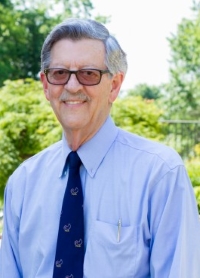Mennonite Health Journal
Articles on the intersection of faith and health
When No One is Looking
Joseph Longacher, MD
from Mennonite Health Journal, Vol. 15, No. 1, January 2013
Those of us of a certain age will remember Candid Camera, arguably the first reality show on TV. The premise was simple: Hidden cameras monitored the reactions of ordinary people placed in contrived situations designed to confuse or embarrass them, and recorded the results for an audience numbering in the millions. Under the direction of its creator, Allen Funt, the program lasted from 1948 to 1974 and during its heyday from 1960-1967 consistently ranked in the top 10 shows each year.
Candid Camera was probably successful because at some level we enjoy watching how others react to real or perceived stress, even though none of us would like to serve as the foil for others’ enjoyment. Since Candid Camera, the use of hidden cameras has extended to many aspects of life, from monitoring banks, parking decks, and apartments, to use in social experiments (determining how many persons wash their hands in a public restroom, or return a wallet planted on a sidewalk).
Yet the principles underlying entertainment such as Candid Camera, as well as the more serious ways in which we monitor human behavior, are actually quite significant. Why do we behave the way we do? Does our behavior change when we know we are being watched? And what is the connection between behavior and character?
The answers to these questions can be learned from many examples recorded in human history, or as we simply observe those around us (or ourselves). The Bible includes both teachings and stories emphasizing the need to integrate what we say we believe and how we act, from the risky but exemplary behavior of Daniel and Esther, to the hypocrisy of the Pharisees and the deceit of Ananias and Sapphira.
These observations can be related to Mennonite Healthcare Fellowship and its members. To illustrate the connection, let me remind you of the behavior of a special group of young men during World War II—the conscientious objectors who because of their beliefs rejected military service and instead performed alternative service. Many of them were assigned to work as attendants in the abysmal mental hospitals of the time, with squalid conditions and unsympathetic personnel.
Among the 12,000 men who performed alternative service through the Civilian Public Service were 4,665 Mennonites and 1,353 Brethren, the largest two church groups. Of the 12,000, about 3,000 served in 40 mental hospitals throughout the U.S. Approximately half of these 3,000 men were Mennonites. 1
These thousands of young men (and about 300 young women who voluntarily joined them in their efforts) lived out their beliefs in the ways in which they treated the difficult and often unappreciative patients under their care. Often they brought for the first time to these patients the kindness and respect they so badly needed but had not received. In other words, they were committed to truly caring for their patients as persons irrespective of the physical and emotional costs.
These young people did what they did because it was the right thing to do, not for any personal praise or to pursue a specific social agenda. Yet, their actions, along with their suggested improvements, contributed to an increased national awareness of the abuses rampant in most mental hospitals. This awareness led in turn to widespread reforms as those in leadership made long overdue changes to improve the care of the mentally ill. The observations and recommendations of conscientious objectors received national attention through an expose in Life magazine as well as through Eleanor Roosevelt’s regular newspaper column, “My Day.”
As healthcare professionals, each of us has the opportunity to emulate the examples of those persons as we express our Christian beliefs on a daily basis in our own unique setting. So perhaps a better title for this reflection would be “What do you do when othersare looking?” Are you able with courage and humility to live out your faith?
The theme of our Annual Gathering at Goshen College, June 21-23, will address these very issues under the theme “Moral Dilemmas in Healthcare,” focusing on the role of conscience as we practice our chosen vocation. I hope you can join us at the Annual Gathering to participate in the dialogue. I would also encourage you to attend one of the Regional Meetings that may be scheduled for your area, where you can interact with others and learn about how they have been able to express their faith in action.
About the author
 Joe Longacher, MD, is a past President of Mennonite Healthcare Fellowship and lives in Harrisonburg, Virginia. He retired at the end of 2012 from a practice in gastroenterology in Richmond, Virginia and was part of the Implementation Team that gave leadership to the formation of MHF. Joe has also served at the conference and denominational level and was a past president of Mennonite Medical Association (MMA). He is married to Constance (Brenneman), originally from Hesston, Kansas, and they have four children and six grandchildren.
Joe Longacher, MD, is a past President of Mennonite Healthcare Fellowship and lives in Harrisonburg, Virginia. He retired at the end of 2012 from a practice in gastroenterology in Richmond, Virginia and was part of the Implementation Team that gave leadership to the formation of MHF. Joe has also served at the conference and denominational level and was a past president of Mennonite Medical Association (MMA). He is married to Constance (Brenneman), originally from Hesston, Kansas, and they have four children and six grandchildren.
